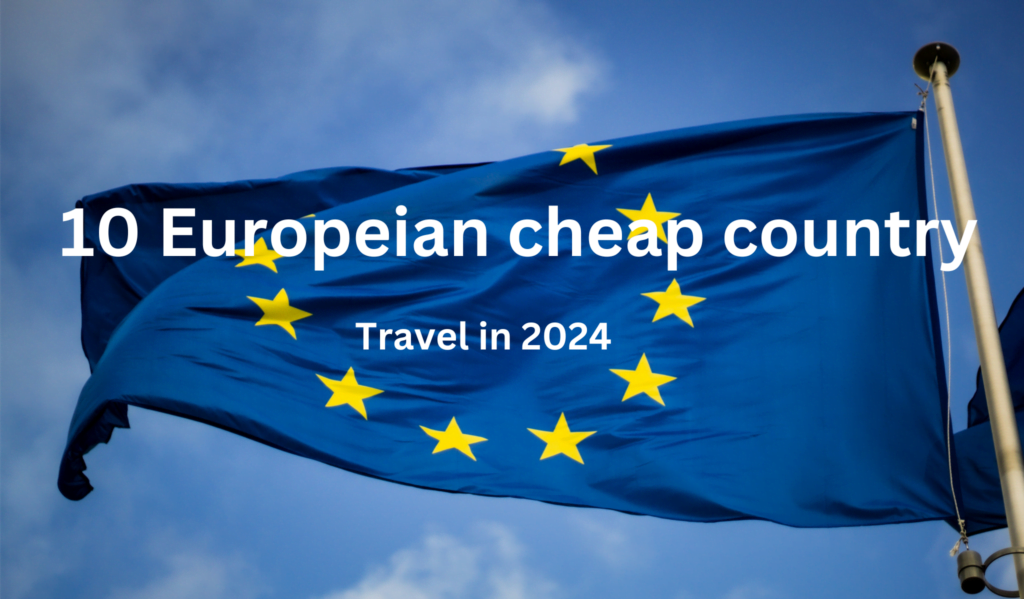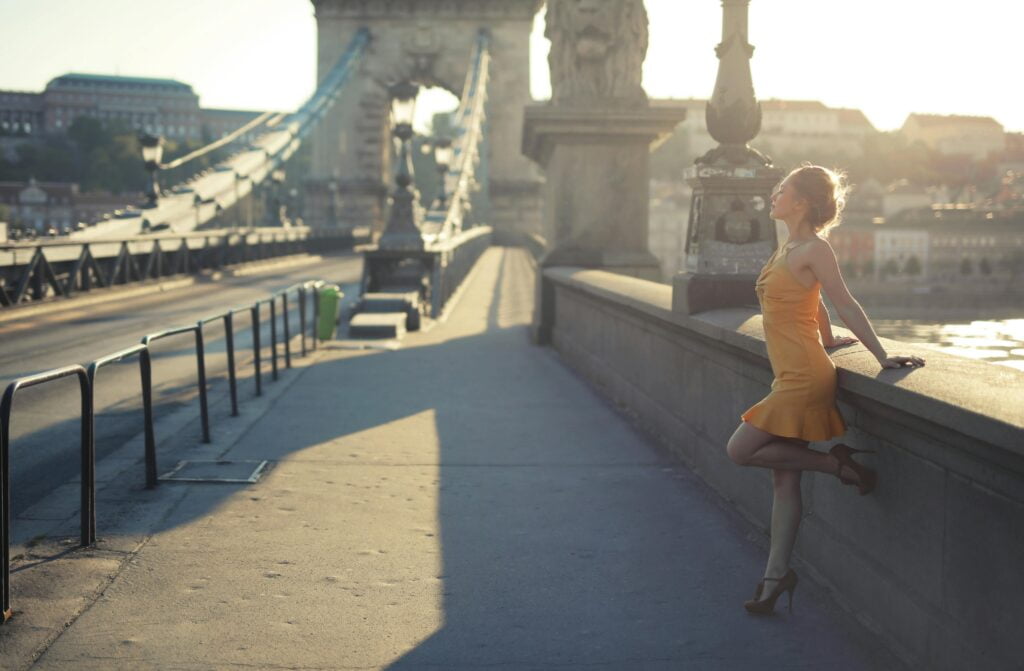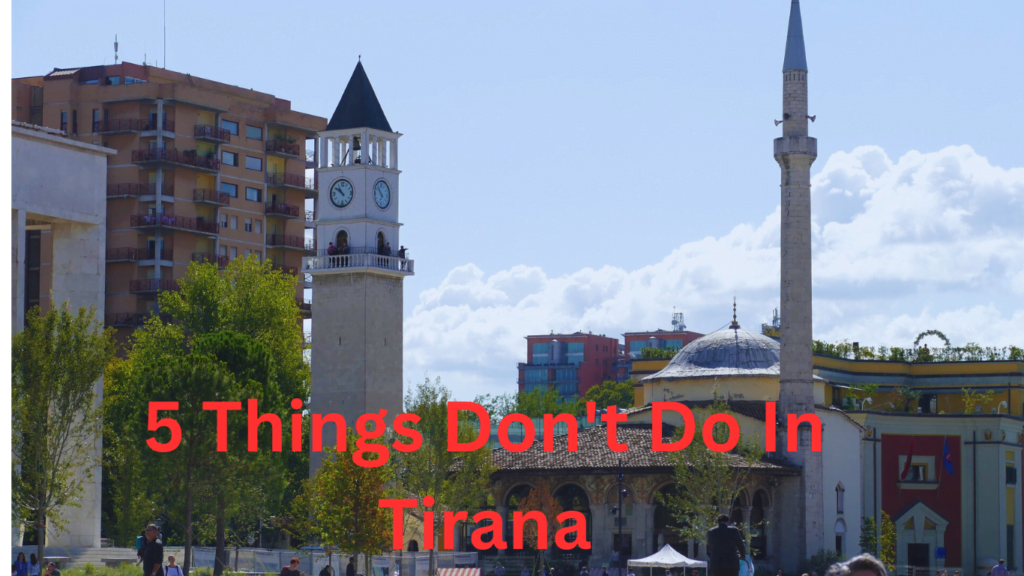In this blog, I’m going to share 10 big mistakes you want to be sure to avoid on your trip to Europe. Mistakes that will cost you money, waste your time, and even make you look rude without you even knowing. I have traveled extensively throughout Europe and have had the joy of introducing several other travelers to European culture, and I noticed some commonalities along the way in terms of questions and mistakes being made.
So, the purpose of this blog is to help you avoid those mistakes and hopefully give you some useful tips along the way. So, noteworthy things we’re going to talk about are money, transportation, how to design an itinerary, and a few other blunders that you want to avoid. Just a quick note before we get started: this is not meant as harsh criticism of tourists or of Americans in general. It’s all in the spirit of love. OK, but don’t worry, when we get to points 6, 7, and 8, you’ll see what I mean.
#1- Choosing wrong currency exchange system
The first mistake revolves around how to get cash for your trip to Europe. You definitely don’t want to use the currency exchange at the airport when you arrive at your destination. They charge crazy fees, and it’s going to cost you big time. What I always tell people to do, and what I always personally do myself, is go to a bank in my destination country and use their ATM. Depending on where you bank back home, there is probably still going to be a small ATM fee associated with using that bank’s ATM, and I try to circumvent this in two ways. The first way is by making a large withdrawal to maybe only make 1 to 2 withdrawals from an ATM per trip if it’s a 10-day to 2-week type trip to Europe.
The second way you could circumvent this is by opening an account with a bank that offers a checking account with $0 international ATM fees. Charles Schwab bank is one example of these. Now, this is super important: Not all ATMs are created equal. Using an ATM at a bank, do not use one of those Euronet ATMs; those things are a complete scam. If you’re stuck without options and a Euronet ATM is your only option, okay, go ahead, I’ve had to do that before, but do not, I repeat, do not use dynamic currency conversion when you’re making your withdrawal. You will have the option to choose between leaving it in the currency of your destination country versus withdrawing it in your home currency, and that may seem really nice, but there are massive, massive fees associated with it. I repeat, this is a complete scam.
#2- Not attempt learning basic language
The next mistake I see when people travel to Europe is not trying to learn at least a little bit of the language. Learning at least a few basic phrases of the country or countries you’ll be visiting can make life a lot easier. You’d be surprised how much learning just a handful of phrases can improve your confidence, speed things up for you, and increase your street cred with locals. Some great basic phrases to learn in any country that you’re going to visit are: hello, goodbye, please, excuse me, toilet (it’s a great word to know), how to order your favorite beverage. One that I find comes up a lot, actually, is how to ask for the check in a restaurant. The reason why that’s kind of shocking, you know, in the USA a lot of times somebody’s bringing you your check and kind of shooing you out of the restaurant. In Europe, man, they’re like, you’ve got to recognize a sign to get the checks. So, knowing how to ask for the check in the local language can be very helpful. There are tons of ways to dip your toe in the water with learning the language.
Duolingo is a good one, probably my favorite, and the method that’s worked best for me is the Pimsler method, which I think was really effective because it revolved around hearing and speaking rather than reading and writing, which makes sense, right? On your trip, you’re probably not going to do a whole lot of writing in the local language; you’ll most likely be doing a little bit of listening and speaking. One thing I loved about the Pimsler method, which by the way, is not a sponsor or anything, I just found it really useful, is that the first thing they taught me how to say was “I don’t understand” in Italian, “Non capisco l’italiano,” and how to ask if the other person knew English, like “Do you speak English?” I found that even knowing those phrases and how to pronounce them correctly helped me so much. The thing is, many Europeans are multilingual, and a lot of them, especially in more popular destinations, speak at least some English. “Thank you” in their area was a guess, but it’s still very helpful and respectful to at least try. Worst case, you’re going to learn something; it adds to the adventure.
One last tip about language: make sure to download Google Translate before your trip. It’s super helpful to download the language of the country that you’re visiting before you leave. That way, if you’re ever without a signal or whatever, you’ve got it prebaked in your app. And then the app is loaded with a bunch of useful features, a tremendous mistake when.
#3- Not using public transport
A tremendous mistake when visiting Europe is ignoring public transportation. Europe has an amazing, comprehensive, and generally efficient transportation network with trains, buses, trams, and metros that can get you around pretty quickly and cheaply. Opting for public transport is often more economical and convenient, and it also gives you the authentic experience of traveling like a local. Speaking as an American, I think there are many cases where we’re just used to renting a car or getting a taxi or an Uber; it’s just the default.
But in Europe, there could be some cases where that’s your best option. In fact, in many cases, it’s going to be the worst option. In cities, parking is really hard to come by and ridiculously expensive in a lot of cases. A train is going to be a pretty affordable way to get around, not always a bus, very cheap way to get around. And look, there are definitely cases where the car is going to be your best option, like if you want to take a side trip or a day trip. But my advice is just don’t go in assuming that if you want to go somewhere, you have to have a car. And in those cases where you want the car for the day trip, consider only renting it for the day that you need it and not your entire trip to Europe.
#4- Overstuffing your itinerary
A big mistake to avoid when traveling in Europe is overstuffing your itinerary. It can be really tempting when you first visit Europe to try to go everywhere and see everything, but it’s just a recipe for disaster. My very first trip to Europe covered 9 or 10 countries in 32 days, which is an average of like 3 days per country. And in some countries, I visited more than 1 city, which is even less. Let me ask, would you try to visit all 50 US states in 50 days? Like, other than for the achievement of doing that, probably not, why? Because you wouldn’t actually be seeing those places; you’d be seeing the inside of your car or a plane. And the same is true, I find, when people visit Europe. They want to spend 1 day or maybe 2 days per city, move quickly between all the major sites, and they really just don’t leave enough time to breathe. I understand we’ve all got limited vacation time, most likely, and I’m all about maximizing my time when I’m on a trip. However, I do believe that you have a deeper, richer, and more fulfilling experience generally if you slow down. And as Reese says, assume you’ll come back. Nowadays when I plan a European itinerary, I take the same approach. When you’re on the ground in the cities that you’re visiting, avoid making minute-by-minute itineraries that cram every tour and every museum. Focus on the essentials and the areas of high interest to you.
#5- Not having a game plan at all
Above all of this is not having a game plan at all, and that’s actually a mistake I see all too commonly as well. I know people who literally spend thousands of dollars on plane tickets and lodging only to go to a new destination and sit in a bar and drink all day long when you literally could have stayed in your hometown to do that. Now, maybe you do actually have intentions to go out and see something, but you haven’t researched the logistics or the timing of how or when to do those things. Many of the major tourist sites in Europe sell tickets in advance, and many of them sell out weeks or even months in advance, so it’s best to do your research way ahead of time and don’t assume you’ll be able to just show up and walk in. I like to try and get those skip-the-line tickets in advance anyway because I don’t really like standing in line. In that same vein, it’s also always worth it to research and try to get reservations for any of the restaurants or attractions that you might care about dining at, and in a lot of cases, that doesn’t have to happen way in advance. Like, we always like to ask our host if we’re staying in an Airbnb or wherever they would recommend, so a lot of times, it’s like the day we arrive in a new city, we try to make a reservation for a place for dinner later that week. Our personal philosophy here and when we’re together is striking up a balance between seeing those important cultural and historical sites and leaving plenty of room for freestyle. Hey, if you’re getting value out of this, please hit that like button so.
#6- Not expexting cultural difference
Another big mistake I see when people visit Europe, especially for the first time, is not expecting things to be different. I don’t mean knowing every little thing that will be different, but not expecting that some things will be. For example, you’re usually going to have to pay for water refills; free refills are not really a thing. Ice is a possibility, but you’re usually going to have to ask for it. If you’re from the USA, this one’s gonna feel really weird to you, but you’re going to have to pay for bathrooms a lot of times. Am I telling you that I love all of these things? No, not necessarily, but I am trying to say be smart. I’ve been around people who were visiting Europe for the first time who, I feel, were kind of expecting to find America in Europe. Well, I don’t know, have your expectations don’t work, but in my opinion, it’s no surprise that they didn’t have a good time. Another unfortunate way I’ve seen this play out is when people don’t get at least a little bit adventurous with the local cuisine, and then they subsist on a diet of like McDonald’s and Starbucks and Hard Rock Cafe. I think part of travel, at least European travel, is making an effort to try the local food and embrace unique differences, even if you don’t love all the new flavors and idiosyncrasies. Think of it like a game; even a trip to the grocery store in a new country can be exhilarating and fun. In my opinion, your trip and your life are too short to get bent out of shape over minor things.
7- Not research the local customs & Etiquette
A big mistake travelers make when visiting Europe is not taking time to research the local customs and etiquette. A great example of this is meal times in Spain. If you’re trying to eat lunch at noon, you’re probably going to be eating alone; lunch is at 2 PM. Dinner is going to be starting around like 9 PM. Tipping is a perfect example of this; in many table service restaurants across Europe, tipping is much more modest than what you might be used to. Usually, wait staff is much more fairly compensated, so tipping is more of a nice gesture than it is a necessary piece of their economic survival. Or it can commonly be an easy way to settle the bill—you’re just rounding up. But this varies highly depending on the country and sometimes even the distinct region, so be sure to do your research. Oftentimes, the service charge will actually be built into your bill, and it’ll even say this on the menu or the receipt. Now, in more touristy areas and restaurants, at times, it will say in English “tip not included” when in fact service is already built-in. We’ve even had the waiter kind of cajole us about tipping in those situations before. In other countries like Iceland, zero tip is expected; you might even get weird looks if you leave one. In another place, it’s seen as rude to leave just a single Euro; it would be better to leave no tip at all over €2, but leaving one is like a slap in the face somehow. I hope I’ve thoroughly confused you about tipping; the point here was to show you a bunch of examples, not to explain how tipping in Europe works. The point is to do your research and to try to respect the local way of doing things.
8- Assuming Europeans are Rude
Another huge mistake I see is assuming that Europeans are rude or that they don’t like you. This is completely false. As a traveler, I would say one of the top 5 questions I am always asked by people who live here is if people were nice to us while we were gone. Like if there’s this prevailing belief that the entire world just hates America. And I’m not saying that we don’t have enemies, but there’s this common fear that American travelers are just disliked. This couldn’t be further from the truth in my experience traveling Europe. The truth is, when Europeans don’t like is tourists who are loud, rude, and disrespectful. If you’re a European watching this, I would love to hear your thoughts in the comments below, but in my experience, we have NEVER met someone that was rude or mean to us simply because of our nationality abroad. That said, when you travel to Europe, you should act like you’re a guest in someone else’s country: be kind, smile, be humble. If there is one virtue to cultivate as a traveler, and maybe in life in general, it’s humility. Leave your airs at home. Part of being a traveler is saying, “Hey, maybe my way of life isn’t the only way,” and I find that when you carry humility with you, the people that you encounter are much more likely to treat you with respect, kindness, and hospitality.
9- Not leveraging local guide
A big mistake I see travelers make when they visit Europe is not leveraging local guides and experiencing. Some of my fondest memories from all of my European adventures come down to authentic local experiences I couldn’t have otherwise had without an experienced guide or teacher—from seeing how Parmesan cheese is made in Italy to paragliding in Innsbruck, Austria, to learning to make pierogi in Krakow, Poland, to creating authentic ceramic pottery outside Florence in Montelupo Florentino. These unique and memorable experiences that I will truly never forget, and I think there are multiple cool things at play here. First of all, you get to meet a real local person and get to know them and understand their way of life. And second, you get to break out of the monotony of only seeing things with your eyes; you get to actually experience it and be a part of it yourself. There are a lot of great ways to find guides; I usually use Airbnb Experiences or Viator. Just be careful to read the reviews. I wouldn’t be the first person to do an experience if it’s got zero reviews; there are scams out there. And extra, ask your host questions like where they like to eat or even to take a look at your itinerary and see maybe what else you should do or what you could skip. I find that these folks really do want to help; that’s why they’re in the hospitality.
10- Bringing wrong travel bag
Bringing the wrong bag and packing the wrong stuff is a big mistake. I made another full blog about it; you should read that. I share my exact recommendations on mistakes you should avoid and what to bring with you instead. Thanks so much for reading.





